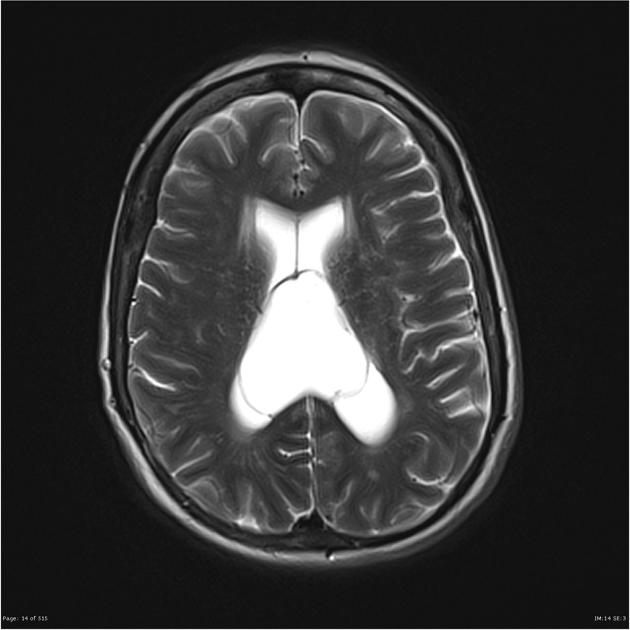Cavum vergae cysts are rare lesions which are usually asymptomatic. It should not be confused with cavum septum pellucidum et vergae which is common. Although there is no actual pathological distinction between a run-of-the-mill cavum vergae and a cavum vergae cyst, the latter is sometimes used to denote a transverse diameter of more than 1 cm 4 or when the outer margins are convex.
On this page:
Epidemiology
Cavum vergae cysts are rare congenital lesions, gradually enlarging with time. As they are often asymptomatic the diagnosis may not be made until adulthood.
Clinical presentation
Usually asymptomatic. Occasionally the cyst is large enough to compress the midbrain tectum and aqueduct and result in obstructive hydrocephalus. Sometimes the cyst may be large enough to impair the normal drainage of the occipital and temporal horns of the lateral ventricles. In either case, presentation is with signs and symptoms of raised intracranial pressure (morning headaches, worse on stooping etc..)
Radiographic features
Ultrasound (in the neonatal or antenatal period), CT and MRI are all able to demonstrate cavum vergae cysts. Features consist of a cystic lesion located in the midline, posterior to the foramen of Monro, below the posterior body and splenium of the corpus callosum and above the fornices (which it often splays).
Treatment and prognosis
In most cases, patients are entirely asymptomatic and as such, no treatment is required. If hydrocephalus is present, surgical options include:
open or endoscopic cysto-ventriculostomy
stereotactically introduced catheter drainage of the cyst into the ventricles 1
Differential diagnosis
-
only a consideration on ultrasound
color duplex scanning easily demonstrates flow





 Unable to process the form. Check for errors and try again.
Unable to process the form. Check for errors and try again.